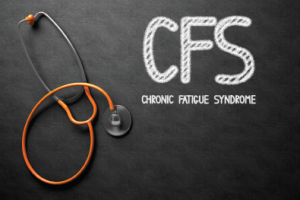
Tashatuvango / shutterstock.com
CHICAGO—Joseph Breen, PhD, program officer at the National Institutes of Health in Bethesda, Md., opened the chronic fatigue syndrome (CFS) session at the Federation of Clinical Immunology Societies (FOCIS) 2017 meeting by asking presenters to describe the current state of the science to the key immunology stakeholders gathered in the room. The hope was that the presentations would stimulate new approaches to decipher the mechanistic and immunological underpinnings of myalgic encephalomyelitis (ME)/CFS, as well as open new avenues for clinical solutions.
Elizabeth Unger, MD, PhD, chief of the chronic viral diseases branch of the Centers for Disease Control and Prevention (CDC) agreed with this call to action, stating, “It is very, very important that we have excellent scientists investigating this illness.”
What’s in a Name?
Researchers coined the name chronic fatigue syndrome in 1988 at the time of the first case definition, and the name has remained attached to the disease. Now, however, many patients and clinicians feel the name chronic fatigue syndrome trivializes the medical condition and they choose, instead, to use the name ME. CFS is also known as systemic exertion intolerance disease (SEID).
Public Health Problem
Dr. Unger described ME/CFS as a serious and long-term illness that affects many systems throughout the body. Patients who live with ME/CFS are unable to function in the same way they did before they became ill.
“One of the problems clinicians have is that the patients can look healthy when they walk into the office,” she explained, adding that, “It’s important they know this is a biological illness. This is not a mental illness.”
At least 1 million Americans have ME/CFS. This translates into a prevalence rate of 0.2%–0.7%. Unfortunately, only 20% of patients have been diagnosed. Patients, families and society bear the significant cost of the disease, which is estimated to be $9–14 billion annually in direct medical costs.
Although ME/CFS affects all populations, it is most prevalent in individuals aged 40–50 years. Infectious risk factors for ME/CFS are notable, but it is unclear if these infections are a cause or effect of ME/CFS. Non-infectious risk factors for ME/CFS include stress from physical trauma and adverse events. Some patients with ME/CFS have abnormal sleep patterns, but there are no consistent sleep abnormalities.
“The syndrome looks like a ‘sickness behavior’ triggered by cytokines after infection,” acknowledged Dr. Unger.
ME/CFS presents multiple challenges to the medical system. Firstly, it has no diagnostic test. Instead diagnosis relies on case definition, which is often inadequate to describe the disease. In 2015, the Institute of Medicine proposed a clinical case definition for ME/CFS. The new criteria include a substantial reduction or impairment in the ability to engage in pre-illness levels of occupational, educational, social or personal activities; post-exertional malaise; unrefreshing sleep; and at least one of the two symptoms: cognitive impairment or orthostatic intolerance.
The new Institute of Medicine definition has not been universally accepted and, of course, it does not apply retroactively. Thus, the literature includes multiple definitions of ME/CFS. The different definitions all agree that patients have severe unexplained fatigue that is not relieved by rest and reduces activity. The definitions also all acknowledge that this extreme fatigue can be accompanied by additional symptoms. However, the different definitions disagree about the duration of fatigue (six months or not specified), the number of symptoms required (from five to eight) and whether post-exertional malaise is a required symptom or merely an additional symptom.
Not only do the different definitions represent a challenge to understanding ME/CFS, but the heterogeneity of the presentation is also difficult for clinicians and researchers. Patients differ with regards to demographics, duration of illness, comorbid conditions, waxing and waning disease course, medications and environmental exposures. Dr. Unger concluded that the ME/CFS community needs enhanced measurement methods of disease, which will facilitate the study of ME/CFS as a multifaceted illness.
Unfortunately, although researchers have looked for clinical phenotypes that can be used to place patients into subgroups, they have so far been unsuccessful. One potentially important distinction is whether a patient experiences acute onset or gradual onset of the disease. Dr. Unger concluded her presentation by directing the audience to the CDC’s recently updated website on the topic.
Circulating Cytokine Signatures
Jose Montoya, MD, Professor of Medicine at Stanford University in Palo Alto, Calif., provided background on what is known about inflammation in patients with ME/CFS. He began by acknowledging the lack of consensus that ME/CFS is even an inflammatory illness. Although disease onset is often associated with acute infection and presents with ongoing or fluctuating flu-like symptoms, conventional markers of inflammation, such as erythrocyte sedimentation rates and C-reactive protein (CRP), are rarely increased in patients with ME/CFS. Although 39 cytokine signatures are associated with early disease, as chronic fatigue syndrome becomes more severe, evidence of inflammatory pathology decreases.
In their latest research, Dr. Montoya’s laboratory used the Luminex assay to evaluate serum samples and compared the cytokine signatures in patients with ME/CFS with healthy controls.1 They excluded individuals with a history of major depression or substance abuse in the past year. Their study included 192 cases of disease and 392 controls, and they assessed disease severity using the multidimensional fatigue inventory (MFI)-20 survey. The vast majority (96.9%) of their patients with ME/CFS experienced unrefreshing sleep.
The researchers adjusted cytokine levels for confounding factors, such as age, and identified 17 cytokines that tracked with the severity of illness, 13 of which were clearly pro-inflammatory. The biggest signals were from transforming growth factor (TGF)-β and resistin. “Resistin had this unusual funny behavior,” explained Dr. Montoya. “We really don’t have a good explanation for this.”
The presence of a TGF-β seemed more expected. TGF-β is a 112 amino acid protein with pleiotropic capacity. As such, it is involved in cell proliferation, differentiation, morphogenesis, tissue homeostasis and regeneration. It is also involved in the pathogenesis of Marfan syndrome. Although the presence of TGF-β in patients with ME/CFS is intriguing, Dr. Montoya acknowledges they cannot be certain their experiments are detecting the active form of TGF-β.
He also directed the audience’s attention to two other cytokines that may provide insights into disease. Leptin levels correlated with daily fatigue and severity of illness and chemokine (C-X-C motif) ligand 9 (CXCL9) were inversely correlated with fatigue duration. Dr. Montoya noted that the association disappeared when data were analyzed for severity.
Dr. Montoya also explained that his group found no correlation between disease severity and disease duration. He found this result puzzling and suggested the possibility that patients may remain in a given disease severity category. He concluded his presentation by proposing that scientists are approximately five years away from truly understanding the biological correlates of ME/CFS. Right now, his data point to a “broad hyperactivation of the immune system that is hard to put in one box.”
Lara C. Pullen, PhD, is a medical writer based in the Chicago area.
Reference
- Montoya JG, Holmes TH, Anderson JN, et al. Cytokine signature associated with disease severity in chronic fatigue syndrome patients. Proc Natl Acad Sci USA. 2017 Aug 22;114(34):E7150–E7158.


